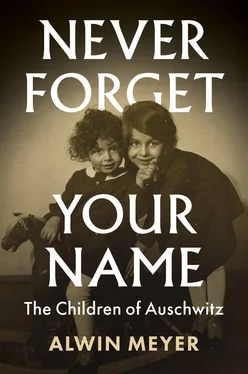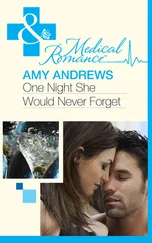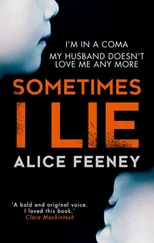322 306
323 307
324 308
325 309
326 310
327 311
328 312
329 313
330 314
331 315
332 316
333 317
334 318
335 319
336 320
337 321
338 322
339 323
340 324
341 325
342 326
343 327
344 328
345 329
346 330
347 331
348 332
349 333
350 334
351 335
352 336
353 337
354 338
355 339
356 340
357 341
358 342
359 343
360 344
361 345
362 346
363 347
364 348
365 349
366 350
367 351
368 352
369 353
370 354
371 355
372 356
373 357
374 358
375 359
376 360
377 361
378 362
379 363
380 364
381 365
382 366
383 367
384 368
385 369
386 370
387 371
388 372
389 373
390 374
391 375
392 376
393 377
394 378
395 379
396 380
397 381
398 382
399 383
400 384
401 385
402 386
403 387
404 388
405 389
406 390
407 391
408 392
409 393
410 394
411 395
412 396
413 397
414 398
415 399
416 400
417 401
418 402
419 403
420 404
421 405
422 406
423 407
424 408
425 409
426 410
427 411
428 412
429 413
430 414
431 415
432 416
433 417
434 418
435 419
436 420
437 421
438 422
439 423
440 424
441 425
442 426
443 427
444 428
445 429
446 430
447 431
448 432
449 433
450 434
451 435
452 436
453 437
454 438
455 439
456 440
457 494
458 495
459 496
460 497
461 498
462 499
463 500
464 501
465 502
466 503
467 504
468 505
469 506
470 507
471 508
472 509
473 510
474 511
475 512
476 513
477 514
478 515
479 516
480 517
481 518
482 519
483 520
484 521
485 521
486 522
487 523
488 524
489 525
490 526
491 527
492 528
493 529
494 530
495 531
496 532
497 533
498 534
499 535
500 536
501 537
502 538
503 539
504 540
505 541
506 542
507 543
508 544
509 545
510 546
511 547
512 548
513 549
514 550
515 551
516 552
517 553
518 554
519 555
520 556
521 557
522 558
523 559
524 560
525 561
526 562
527 563
528 564
529 565
530 566
531 567
532 568
533 569
534 570
535 571
536 572
537 573
538 574
539 575
540 576
541 577
542 578
543 579
544 580
545 581
546 582
547 583
548 584
549 585
550 586
551 587
552 588
553 589
554 590
555 591
556 592
557 593
558 594
559 595
NEVER FORGET YOUR NAME
The Children of Auschwitz
Alwin Meyer
Translated by Nick Somers
polity
Originally published in German as Vergiss deinen Namen nicht. Die Kinder von Auschwitz by Alwin Meyer
© Steidl Verlag, Göttingen 2015
This English edition © Polity Press, 2022
The translation of this work was funded by Geisteswissenschaften International – Translation Funding for Work in the Humanities and Social Sciences from Germany, a joint initiative of the Fritz Thyssen Foundation, the German Federal Foreign Office, the collecting society VG WORT and the Börsenverein des Deutschen Buchhandels (German Publishers & Booksellers Association).
The publishers gratefully acknowledge Catriona Corke’s contribution to the English translation.
Polity Press
65 Bridge Street
Cambridge CB2 1UR, UK
Polity Press
101 Station Landing
Suite 300
Medford, MA 02155, USA
All rights reserved. Except for the quotation of short passages for the purpose of criticism and review, no part of this publication may be reproduced, stored in a retrieval system or transmitted, in any form or by any means, electronic, mechanical, photocopying, recording or otherwise, without the prior permission of the publisher.
ISBN-13: 978-1-5095-4550-6
A catalogue record for this book is available from the British Library.
Library of Congress Control Number: 2021941498
by Fakenham Prepress Solutions, Fakenham, Norfolk NR21 8NL
The publisher has used its best endeavours to ensure that the URLs for external websites referred to in this book are correct and active at the time of going to press. However, the publisher has no responsibility for the websites and can make no guarantee that a site will remain live or that the content is or will remain appropriate.
Every effort has been made to trace all copyright holders, but if any have been overlooked the publisher will be pleased to include any necessary credits in any subsequent reprint or edition.
For further information on Polity, visit our website: politybooks.com
This book is dedicated to Janek (Jack) Mandelbaum, without whose generosity the English translation would not have been possible. Having survived five Nazi concentration camps and the murder of his parents, sister and brother during the Holocaust, he has spent the last seventy-five years educating people about this dark period of history. His contribution to the publication of this book is part of that noble effort.
Children in Auschwitz: the darkest spot on an ocean of suffering, criminality and death with a thousand faces – humiliation; contempt; harassment; persecution; fanatical racism; transports; lice; rats; diseases; epidemics; beatings; Mengele; experiments; smoking crematorium chimneys; abominable stench; starvation; selections; brutal separation from mothers, fathers, sisters, brothers, grandmothers, grandfathers, aunts, uncles and friends; gas …
In 1940, a first camp by the name of Auschwitz, later to be known as the Main Camp or Auschwitz I, was erected by the Nazis on the outskirts of the Polish town of Oświęcim (65 kilometres west of Kraków). The first transport of Polish inmates arrived from German-occupied Poland in mid-1940. In 1941, the Nazis planned and built the killing centre (extermination camp) Auschwitz-Birkenau, also known as Auschwitz II, on the site of the destroyed village of Brzezinka.
From March 1942, Jewish children and their families were transported to Auschwitz from almost all German-occupied countries, for the sole reason that they were Jews. There were already a large number of Jewish boys and girls in the first transports to Auschwitz from Slovakia. Well over 200,000 children were to follow, and almost all of them were murdered.
The Auschwitz complex consisted of forty-eight concentration and extermination camps. Auschwitz-Birkenau has become the unmatched symbol of contempt for humanity, and a unique synonym for the mass murder of European Jewry. It was the site of the largest killing centre conceived, built and operated by the Germans, and played a central role in the Nazi ‘Final Solution’, 1the systematic extermination of Europe’s Jewish inhabitants.
By far the largest group of children deported to Auschwitz were thus Jewish girls and boys (see also pages xiand xii). Most of them were transported with their families in packed, closed and sealed freight cars, mercilessly exposed to the summer heat and freezing winters. They had to relieve themselves in buckets that were soon full. Because the wagons were so packed, many couldn’t even reach the buckets in time and the floors were swimming in urine and excrement. The stench was overwhelming. In many cases, the deportees had little or nothing to eat or drink. Although especially the small children begged constantly for water, their entreaties went unheard. Many – particularly infants, young children and elderly persons – died during the journeys, which often lasted for days.
Читать дальше












